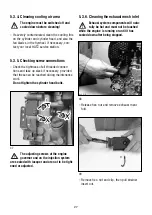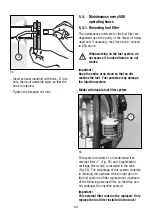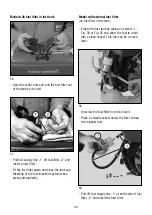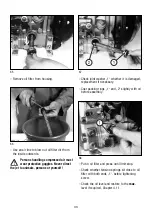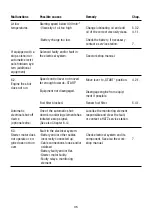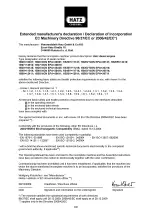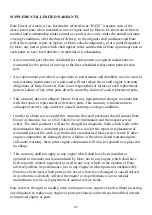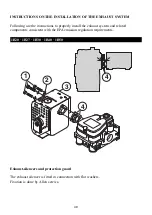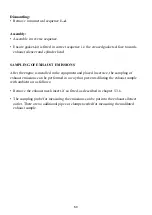
7.
Work on the electrical
system
Batteries generate explosive gases.
Keep them away from naked flame and
sparks which could cause them to ignite.
Do not smoke.
Protect eyes, skin and cloth against the corro-
sive battery acid. Pour clear water over acid
splashes immediately. In case of emergency
call doctor.
Do not place any tools on top of the battery.
Always disconnect the negative (–) pole of the
battery before working on the electric device.
– Do not confuse the
positive (+)
and
negative (–)
terminals of the battery.
– When
fitting
the battery, first connect up the
positive lead
, then the
negative lead
.
Negative terminal to earth = engine block.
– When
removing
, first disconnect the
negative
lead
, then the
positive lead
.
– Always take care to
avoid short-circuits
and
earth (ground) contact of live cables.
– If malfunctions occur, first of all
check
that
cable connections
make good contact.
– Replace a failed indicator light without delay.
–
Do not remove the ignition key
while the en-
gine is running.
–
Do not disconnect the battery
while the en-
gine is running.
Electric voltage peaks can cause damage to
electrical components.
– In case of an
emergency start in manual
mode
, leave the battery (which might be dis-
charged) connected to the engine.
– Before starting
emergency operation without
battery
, proceed as follows before starting:
- disconnect plug-connection to voltage
regulator for engine models with
mounted
instrument box (picture 26)
.Turn key to
off-
position (0)
and remove.
- disconnect plug-connection to instrument
box for engine models with
external
instrument box (picture 27).
–
Do not
splash electrical device with water jet
or pressure jet during engine cleaning.
– When carrying out
welding work
on the en-
gine or equipment, fit the earth clip of the
welding equipment as close to the welding
point as possible and
disconnect the battery
.
The connecting plug for the voltage regulator
must be removed.
The relevant circuit diagrams are enclosed with
the engine if it is equipped with an electrical sys-
tem. Additional circuit diagrams can be supplied
to order.
HATZ assumes no liability for electrical systems
which was not carried out acc. HATZ circuit dia-
grams.
8.
Storage out of use
The new engine can normally be stored dry for
up to one year.
In very humid climates or coastal regions, the
protective treatment is sufficient for up to about
6 months.
For longer periods of storage, please contact
your nearest
HATZ service station
.
38




